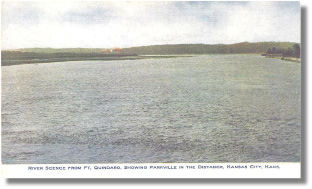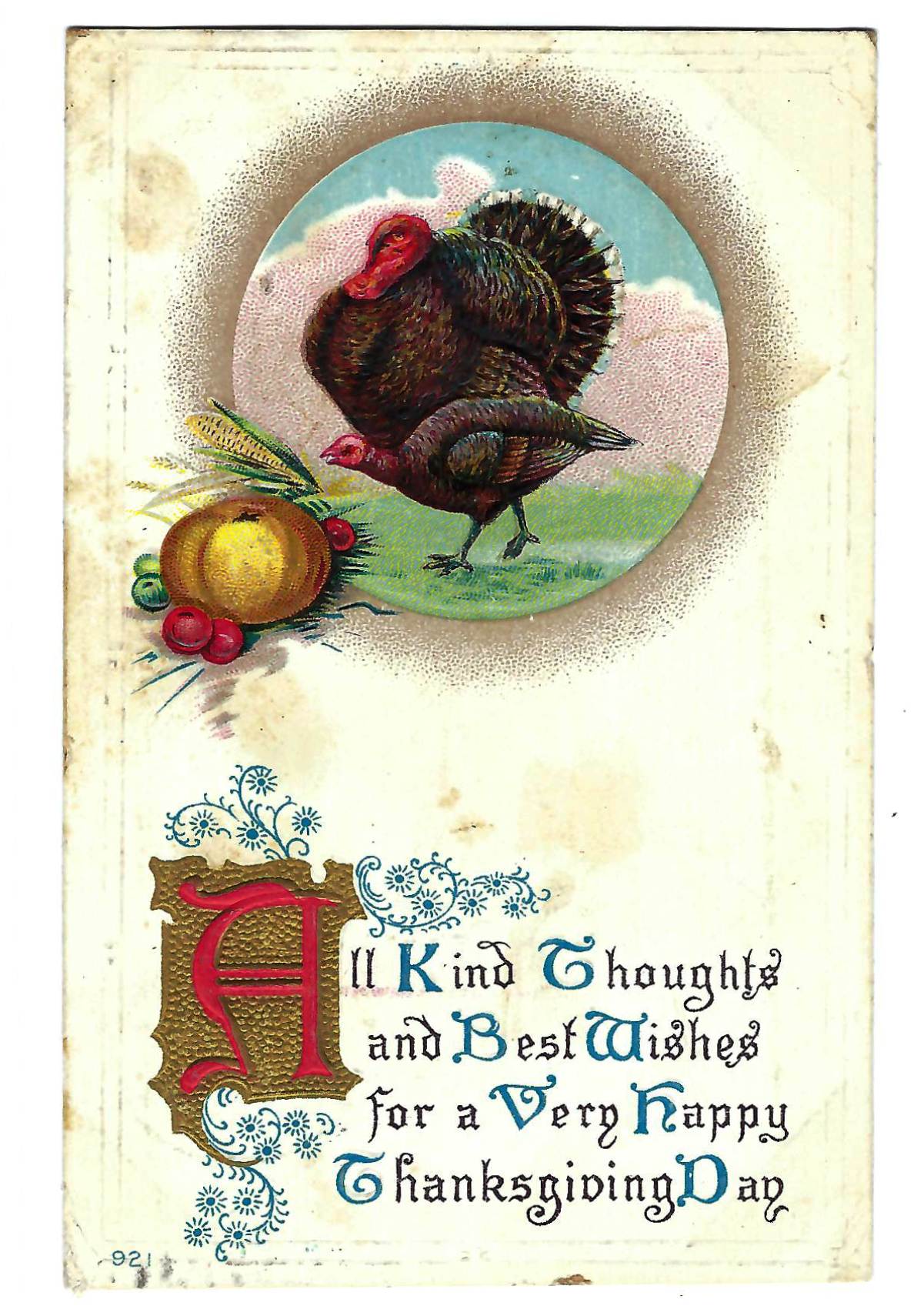
Published by the Webb-Freyschlag Mercantile Company of Kansas City, this undivided back postcard shows a river scene from Ft. Quindaro in Kansas City, Kan., showing a view of Parkville, Mo., in the distance.
According to “The Annals of Quindaro: A Kansas Ghost Town,” published by the Kansas State Historical Society, Quindaro was “surveyed and laid out in proper municipal style” in December, 1856. Two main streets, bordering both the Kansas and Missouri Rivers were graded. Main street fronted the levee and Kansas Avenue ran south at a right angle to the steep levee. Unfortunately the lay out was unworkable due to the high hill that existed just off the levee.
The principal streets were the levee, fronting on the Missouri river, and Kansas Avenue, running south at a right angle from the levee. There was a “Main Street” adjoining the levee. East and west streets were numbered “Third to Tenth” and north and south streets were named “A to Y.”
On paper it was great, but the printed map failed to disclose the steep cliff just back of the levee, most of the townsite being up on the high ground. Many river towns were so planned and the hill wasn’t much higher than the one just back of the landing at Kansas City.
Not soon after, Quindaro launched its own newspaper – The Chindowan, a Wyandotte word meaning “leader.” One of the first stories published by the paper was of the trees that had been felled in the townsite and the grading of a road to the levee so that the town would be an attractive port to the steamboats that plied the waters of the Missouri.
In its first year of existence, Quindaro grew quickly with more than 100 houses and businesses springing up literally overnight. In October of 1857, The Parkville and Quindaro Ferry Company was established specifically to ferry freight along the river between the two cities. Quindaro was indeed a very prosperous new river community. The onset of the Civil War, however, spelled disaster for Quindaro as a township as many of her young men joined the Union Army. Early in 1862, the Ninth Kansas Infantry was quartered in the town and literally destroyed it building by building, leaving shells where prominent buildings and houses once stood. Quinidaro as a town was finished, but its role as a major stop on the Underground Railroad had already been cast. It remains an important part of Kansas History.



















